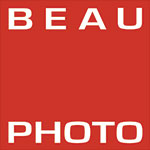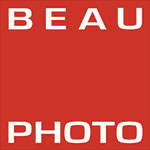Film Friday #19: Kodak Ektachrome E100.
The first E-6 slide film or colour positive we are featuring, it is Kodak’s gorgeous Ektachrome. Admittedly, it might be the wrong season for such a difficult film to master, but considering this is our last chance to get it at its current price (which is no doubt still expensive ), we thought it would be good to feature it now rather than in the new year.
E-6 Slide film is a bit of an endangered species these days. Not many people shoot it due to difficulty in processing it (only The Lab in Vancouver does it) and the costs involved. Plus, it’s difficult to master. Compared to B&W and C-41 colour negative film, E-6 slide has the least amount of tolerance in terms of handling over or underexposure. You have to nail the exposure for the midtones.
Back in the day, slide film was very popular for holiday photos and slide projections and so on. They were used to great effect by photojournalists including, famously National Geographic. The beautiful colours that adorned the pages were mostly taken on Kodachrome and Ektachrome. But of course, with the advent of digital photography, slide film slowly slid away into obscurity. Many still lament the loss of Kodachrome and its processing in 2009, and a few more wept when Ektachrome equally got the chop in 2012. It seemed then that the only slide film left around were from Fujifilm with their Velvia and Provia films. But then Kodak announced the return of Ektachrome 100 in 2017, and the film world cheered!
So knowing all this, why would you shoot slide film in 2020? Colour negative technology has come quite far in colour and tonal reproduction. In fact, Kodak’s own Ektar 100 colour negative film is meant to emulate some of the characteristics that people missed about slide film, namely the colours while being cheaper and easier to shoot.
But as much as colour negative is pretty darn reliable these days, none of it really matches slide film. The vibrant colours and resolving power is simply in a world of its own. Fuji Velvia, for example, is famous for its incredible saturation and sharpness, to the point where every Fuji digital camera these days have presets to try and match this with some success. Kodak’s Ektachrome rendition of the world is very reminiscent of vintage photographs that while still being very fine grained, is still obviously film. Most people these days shoot landscapes and studio when it comes to slide film due to its more careful and controlled nature and those situations are where slide film excel the most.
There is nothing quite like seeing the colour positives in your hand over a lightbox for the first time. It’s easy to simply dismiss slide film as being too expensive and difficult to even bother with, especially when your experience with it is limited to other people’s photos online. But it is one of those things that you have to see to believe.
Ektachrome specifically is unique from the Fuji slide films in a few ways. It’s not as neutral as Provia, but not as saturated as Velvia. It has a somewhat noticeable blue tint especially in the highlights and especially when underexposed. But the contrast is what really gives it that 3D pop. What I mean is the way the shadows and the highlights roll of the subjects that gives the photos layers of depth. It’s what the chrome in Ektachrome refers to.
Unfortunately, all of this comes at a cost. At $24.95 per roll of 135 and $18.96 per roll of 120, it is the most expensive film stock we sell here at the store. And it’s going up further in January, as is all of Kodak’s other offerings. E-6 developing at The Lab isn’t cheap either, as they typically cost more than C-41 or B&W development. Of course, we sell E-6 developing kits too from Arista and Tetenal too if you want to try a hand at developing it yourself to save costs. This is the barrier to entry for most people who seek to try out slide film, maybe saving it for a special occasion. It’s also why we decided to choose it for our Film Friday this week. With prices going up, we’ve decided to give you 10% off this film so you can buy it at the cheapest price we can make it before the new year. It is now $22.45 for 135 and $17.06 for 120. Its still not cheap, but maybe now is the time to get a roll to try and maybe even save for a nice occasion.
In the meantime, here’s some of Hunter and my shots taken on it from over the years.













